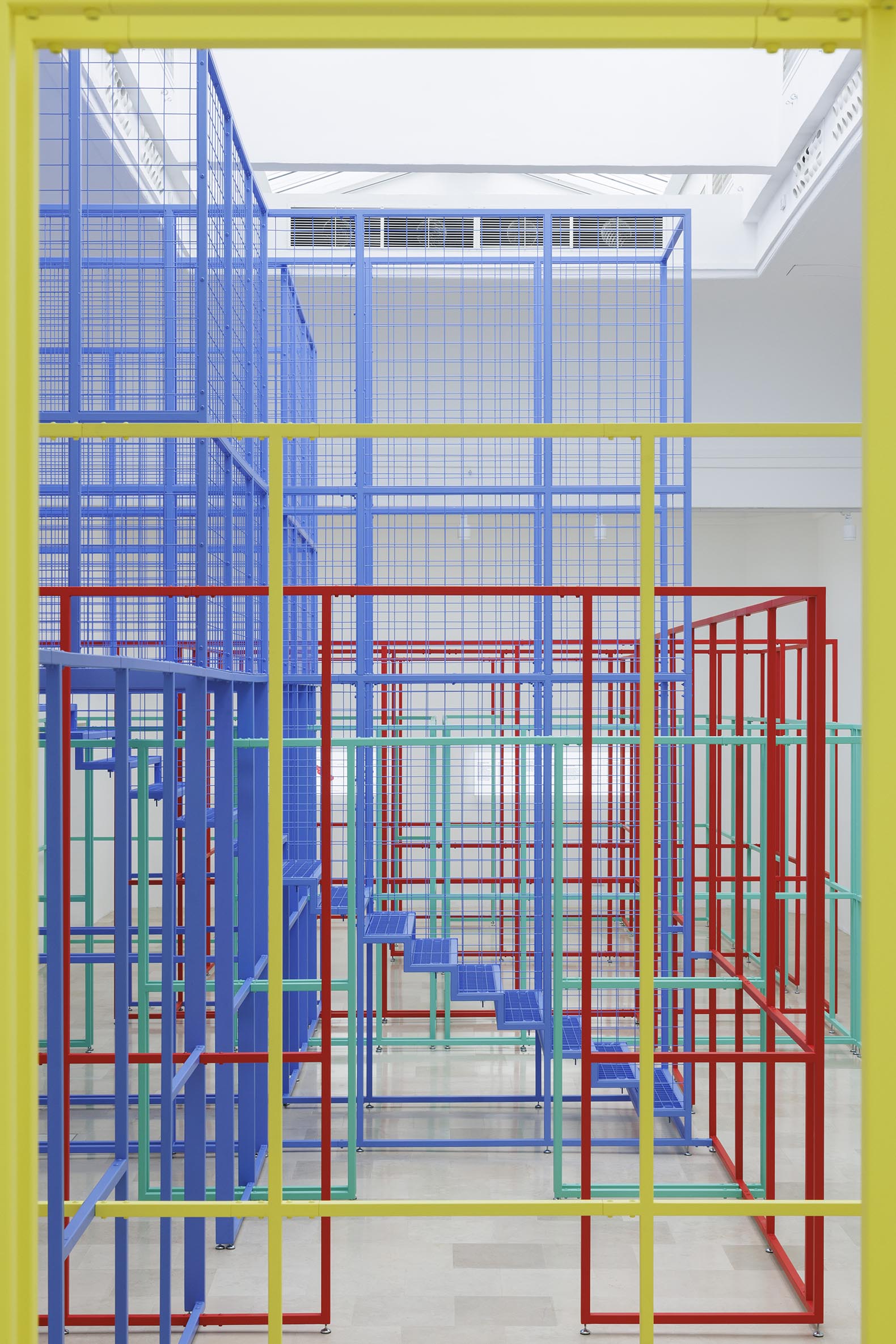“We share a world with data. Believing in its infallibility, we allow algorithms to calculate and design our houses and cities. However, without a sensitive and conscious designer, digitally processed data can create distorted solutions, such as those presented in the Polish Pavilion. Data must be treated not as a source of definitive answers, but rather as a tool for asking better questions. This is precisely the re-evaluation that Datament advocates.”
Anna Barlik (artist), Jacek Sosnowski (curator), and Marcin Strzała (architect).
The sheer amount of data generated every day is staggering. The development of civilization and technology has made us dependent on the production, collection, and processing of information. The conclusions from digitally-processed content are used in architecture, urbanism, and spatial planning, among other things. Believing algorithms to be infallible, will allow them to calculate and design our houses and cities.
In architecture, urbanism, and spatial planning, statistical data analysis and the use of algorithms in design are placing a significant impact on how we live now and will in the future. However, we are less and less concerned with raw data. Information processed with new technologies creates a distorted picture of reality. Based on this digital illusion, we make decisions with very real consequences.

View of Datament, Polish Pavilion, 18th International Architecture Exhibition, 2023. Courtesy of Zachęta—National Gallery of Art. Photograph by Jacopo Salvi (altomare.studio).
The installation of impressive dimensions reproduces the spatial forms of houses from four countries on a 1:1 scale. Made up of almost two thousand metres of coloured steel profiles, the structures are based on average, generalised data on the shape, size and functional layout of houses in different geographical zones. Four countries have been selected on the basis of how much statistical data they produce and collect: Hong Kong, Mexico, Malawi and Poland. The installation faithfully reflects this information, but it has no bearing on the actual housing situation in the places from which the information is derived. A tool that was supposed to bring order to reality becomes a source of error.

View of Datament, Polish Pavilion, 18th International Architecture Exhibition, 2023. Courtesy of Zachęta—National Gallery of Art. Photograph by Jacopo Salvi (altomare.studio).
Datament is the record of a dialogue between an artist and an architect. Anna Barlik works in visual art, local contexts, colour and composition. Marcin Strzała is an architect who explores the relationship between digital data and their physical manifestation in design. Together with curator Jacek Sosnowski, they have developed a structure based on digital data analysis. The title’s neologism, Datament, conveys the idea of the ubiquitous ‘data establishment’ that is constantly shaping the reality in which we live, create and dwell.
The theme of this year’s Biennale Architettura is Laboratory of the Future. The creators of the Datament project question the infallibility of data as a factor in making development decisions, including the architecture and urban planning of future cities. The exhibition is meant to serve as a starting point for a discussion about the extent to which a view of the world seen solely through data is distorted, and how we might interact with it differently. The presentation of the private spaces in the Polish Pavilion, which have been algorithmically calculated and are detached from reality, is a voice in the ongoing discussion on the state and future of housing, within the context of the Biennale Architettura 2023 and beyond.
METALOCUS is live reporting from the Venice Architecture Biennale, which takes place from 20 May to 26 November 2023. See METALOCUS Guide LA BIENNALE DI VENEZIA for all the latest information you need to know to attend and know the best events and pavilions in LA BIENNALE.















































![Brazil pavilion, Terra [Earth]. Photograph by Matteo de Mayda. Courtesy of La Biennale di Venezia Brazil pavilion, Terra [Earth]. Photograph by Matteo de Mayda. Courtesy of La Biennale di Venezia](/sites/default/files/styles/mopis_home_news_category_slider_desktop/public/lead-images/metalocus_brazil-pavilion-earth_venice-architecture-biennale-2023_18_2p.jpg?h=92c4ac38&itok=EtvlbNvv)






